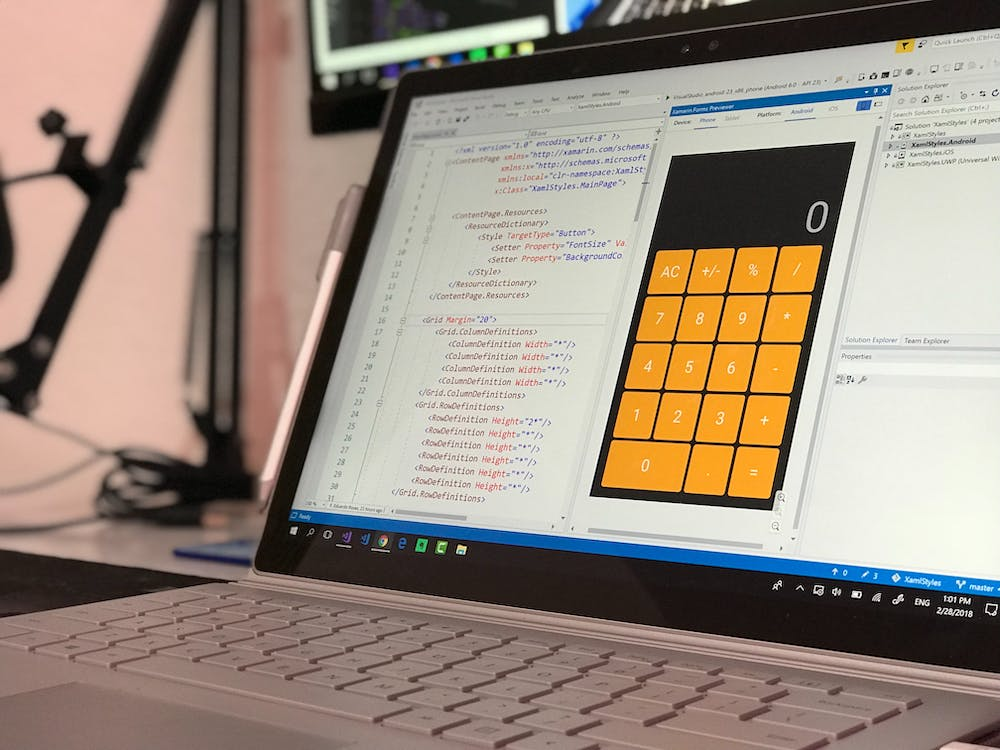Exploring the Advantages of Cross Platform App Development
How many platforms do you interact with when handling routine activities? Perhaps you spend most of the day glued to the desktop screen, and in the evenings, you are on the smartphone or tablet utilizing your favorite applications. Each device runs on a different platform or operating system and demands software bearing certain qualities.
Now, imagine the amount of work that goes into developing and maintaining software for every platform on the planet. That is plenty of work, hundreds to thousands of lines of code and uncountable iterations.
Software developers can escape the tedious work using cross platform app dev. It is like a one-fits-all solution. The developer uses specific frameworks to design and develop software that runs on any existing platform. These platforms include:
- iOS
- Windows
- macOS
- Android
- WatchOS
What does cross platform app dev involve, and is it different from native app development? When should one consider using cross platform app dev?

Ensure optimal user experiences irrespective of the devices or platforms they use
In this post, we explore why businesses should consider cross platform app dev, the evolution of cross platform apps and some skills required to develop and sustain these apps.
Difference Between Cross Platform and Native Apps
Software developers can employ two approaches when developing new products. The path taken depends on the intended target markets and available budgets. The developers can use:
- Native app development
- Cross platform app development
Native app development has been the norm for a long time. Hardware manufacturers partner with software development agencies or freelance developers to build applications operating on a single platform. The program code is not sharable, and the application has superior performance. A native application has unlimited access to internal phone features. It means the developers specialize in Android, Windows or iOS app development. While these apps offer optimal device performance, they are a little costly to develop.
That said, native app development is a work in progress. Developers and agencies are working hard to reduce app development bottlenecks and costs.
Cross platform app dev addresses the challenges associated with native apps. What happens when a company intends to reach more customers, scale operations and improve its brand identity? Such business development initiatives demand that the company distributes its software through all available platforms. That is one application that shares the same codebase and can run stably across platforms and devices.
What advantages does the company reap by utilizing cross platform app dev?
- Reducing app development costs
- Expediting app development
- Easier deployment, maintenance and app integration with third-party solutions
- Enhancing user experiences across platforms
- Standardizing app performances across devices
- Increasing customer acquisition and retention
Cross platform app dev combines different techniques to deliver functional software. The developer intertwines Android app development, web app development, and iOS app development. They do this to facilitate high app performance and minimize software compatibility issues. Knowing how these platforms operate enables developers to customize application codes for adaptation to all target platforms.
After finalizing cross platform app dev, the final app versions are uploaded to multiple app stores. The apps must meet quality control standards and recommended safety regulations provided by each app store.
How to Develop Cross Platform Apps
Cross platform app dev lifecycle is no different from standard or native app development. The only difference is the type of tools and programming languages that developers use. A typical cross platform app dev involves the following stages:
- Problem statement or definition – identify market potential and define how to solve it using a cross platform app. Define the objectives of your project and outline how to achieve every goal.
- Ideate and conceptualize – identify potential solutions. Generate multiple ideas for the same application. Choose the most viable solution and draft a sample app concept. It will outline critical app features, functionalities and desired performance levels. Developers may have to conduct comprehensive market research and identify how their competitors are fairing.
- Wireframe development – at this stage, the developers develop visual representations of the desired end product. How many interactive elements will the cross platform app have? How will they optimize each of these elements? Good wireframe designs contribute to better user experiences and complement subsequent UI UX designs – the developer knows where every component will be placed once development begins. Cross platform app dev teams need to test wireframe designs before committing to a final design.

Testing high fidelity wireframe designs for cross platform apps
- Coding – a bulk of cross platform app development occurs at this stage. Developers choose a suitable development framework and build the app from the ground up. These codes form commands that guide program execution, app responsiveness, onscreen appearance and platform compatibility.
- Testing and deployment – before releasing the finished product, developers must subject cross platform apps to rigorous tests. They test the apps on every target platform. Testing enables them to identify bugs and usability issues associated with particular devices or operating systems. Although developers may not have exclusive access to all devices, they can benchmark with a representative group. Developers can iterate solutions and refine the codebase to ensure apps are operational across platforms.
Choosing a cross platform dev framework
Several cross platform app dev frameworks and tools exist in the market. Before choosing a framework, you have to consider a few factors. The developer or business intending to build a cross platform app should pay attention to the following issues:
- How much money does the company intend to spend on the project?
- What type of app are you creating?
- How soon do you intend to launch the application?
- How complex is the application’s UI UX design?
- How many platforms are you targeting?
- What level of app customization is needed?
- Do you have the resources (or talent) to develop apps for multiple platforms?
Answering these questions enables the company to decide if cross platform app development is the right path and select the most suitable development framework. Every framework has unique capabilities and inbuilt tools. Therefore, the kind of framework chosen significantly affects the outcome of the cross platform app.
Choosing a cross platform app dev framework is not easy either. The software development agency needs to evaluate the skills of its developers and the complexity of the project at hand. Some agencies develop small-scale projects and may not need to use powerful frameworks like Xamarin, designed for enterprise-grade app development. The developers require tools that complement their creativity and assist them streamline cross platform app development. Developers should answer the following question:
- Does the framework have UI UX design capabilities?
- Does it have internal bug identification and fixing tools?
- Can the framework facilitate code adaptation to native platforms?
Let us look at some of the most popular cross platform app dev frameworks.

Use cross platform framework tools for app coding and testing
Flutter
Flutter, a robust cross platform app dev framework, was developed by Google. The framework uses Dart programming language and enables developers to create cross platform apps with native appearances and performance. It contains tools that assist developers to access native APIs. By doing so, the developer can customize cross platform apps to access hardware-specific components like cameras, GPS sensors and audio recorders.
Developers may sometimes be required to develop unique features to give applications the desired platform-specific functionality and performance. Some of these features may not be available on Flutter and the developer is required to implement them on the native side. Flutter uses the Platform Channel technology to facilitate this and create seamless communication between the host (device) and the framework.
Flutter has several attractive features, making them preferable for cross platform app dev. Flutter has Hot Reload that allows developers to make rapid changes to the codebase and implement instant changes to the app.
Flutter is a suitable framework for developing :
- MVP products
- Natively appearing and performing apps sharing similar UI components across platforms.
- Apps that tend to demand heavy device memory allocation
Kotlin Multiplatform Mobile
It is a cross platform Standard Development Kit (SDK) that enables sharing of app codes between iOS and Android apps. The developer has access to the most advanced UI design frameworks to ensure they create attractive and intuitive user interfaces. Kotlin is compatible with UI frameworks like Jetpack Compose (for Android) and SwiftUI (for Apple) to give cross platform apps a truly native appearance.
Kotlin Multiplatform provides unrestricted access to native SDKs. It enables developers to smoothly integrate current cross platform apps with other existing projects for quicker app deployment.
Kotlin primarily uses the Java programming language. It is also compatible with JavaScript and Native.
Ionic
Ionic is an open-source cross platform app dev framework that is easy to use and utilizes several programming languages. Developers can build apps using:
- HTML
- JavaScript
- CSS
The Ionic framework contains several tools and features used to design and optimize user interfaces. The framework is also beneficial for progressive web app development. The platform uses plugins like Cordova and Capacitor to enable developers to access hardware features like cameras and recorders.
React Native
React Native is an open-source cross platform app dev framework based on ReactJS, thus providing access to robust Javascript libraries. Developers leverage these libraries to optimize apps for Android and iOS platforms.
React Native allows developers to access multiple third-party libraries with advanced components. The third-party libraries contain ready-to-use UI elements. Developers opting to use these libraries can reduce app development time.
React Native also has the Hot Reload feature – developers can implement and verify code changes almost in real-time. Applications developed using React Native are lightweight, that is, they are not device memory and resource-intensive. The framework permits code sharing between platforms and has superior rendering capabilities. Developers using the framework can create highly responsive cross platform interfaces.
Xamarin
Xamarin was developed by Microsoft and has become one of the most preferred cross platform app dev frameworks. It is based on the .NET framework and uses C# programming language. The framework contains multiple app development and testing tools that developers can use to manage complex workflows. The framework allows code sharing between platforms and can be used for independent iOS app development or Android app development.
Other Frameworks
Developers can choose a cross platform app dev framework that suits their skills and guarantees quick implementation of software projects. Most of the frameworks are open-source and receive unlimited support from developer communities. However, developers may be required to purchase licenses to develop enterprise software on some of these frameworks. Developers can use one or more of the following frameworks:
- Adobe PhoneGap
- Sencha
- Cocos2D
- Appcelerator
- Monocross
- RhoMobile
Streamlining Cross Platform App Dev
Choosing the right cross platform app dev framework and assembling the right team of developers is not enough to deliver a functional app. There are additional tips that developers and agencies should follow to keep the entire process smooth and verifiable.
Focus on quality.
Perform quality control at all stages of development. Use simple but executable code, maximize app performance and ensure the solution reflects the desired user experiences. Remember, the target customers anticipate remarkable experiences when using your products regardless of the platform.

Control app quality through short and precise program codes
Keep your design simple.
UI UX designs and other app features should solve user problems using simple logic. Do not add so many unnecessary features to the app. Simplify app designs at the wireframe development stage and focus on key functionalities of the app. Too many app features will complicate things and may extend project delivery timelines.
Test early and often.
Cross platform app dev is challenging but rewarding. The rewards are heftier if the development team invests in early and frequent testing. Do not launch a product that has not been sufficiently tested. Use beta and in-house testing mechanisms to unearth potential usability errors and device inconsistencies.
Use the feedback from the general public and peer reviewers to improve cross platform apps. The testers can identify functionality issues that the development team may never notice.
Final Thoughts
Cross platform app dev is a lucrative business that novice and experienced developers should endeavor to exploit. The developers can build revolutionary cross platform products and utilize them to reach wider target audiences faster and more effectively. Before using cross platform app dev, developers should learn how Android, iOS, web and Windows platforms work. They should understand how to optimize apps for each platform and acquaint themselves with basic and advanced programming tools. The developer should select a cross platform app dev framework they are comfortable working with.
